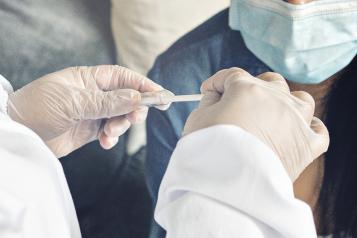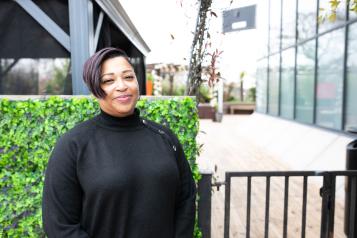Testing times…..the national COVID-19 study and me
Imagine my surprise when in the third week of July, I received a letter that I wasn’t expecting, and from the outside, appeared to be from NHS England. I was being asked to participate in a COVID-19 testing national study to help measure the frequency of cases. The test would only show if I had COVID-19 at the time of my swab, this is an antigen test so would not show if I had previously contracted the virus.
The study is being conducted by the Imperial College London and Ipsos MORI, (an independent research organisation), on behalf of the Department for Health and Social Care.
How I got involved
To participate I had to register and agree that I was willing to take part; I chose to sign up online but there was also the option to register over the phone. It was a straightforward process that took me less than five minutes, I had a unique code to register with and was asked a few general questions.

Taking the test
The test kit and instructions were delivered to me the following week, the kit included: one swab, a swab container, collection labels, a biohazard bag, a collection box (flat packed but really easy to assemble), a security seal for the box, and instruction booklet (pictured right).
The test needs to be done on the day of the collection, so the very first step was to book a collection date. Once again, I did this online and selected a day suitable for me from a choice of dates, (these did include a Saturday collection too). It was not possible to book a time slot for the collection, but the instructions advised I would be contacted with given slot on the chosen day of collection.
The booklet that came with the test gave clear and simple instructions about when and how to take the test on the day of your booked collection. There is also the option to watch a video online about how to take the test correctly. The instructions would not have suited people with sight or reading difficulties and were only written in English, however I did not investigate if there were any other formats available and there is a helpline telephone number that maybe able to assist with these needs.
The test must be performed before 08:00am, (which is the earliest collection time), then it must be bagged, boxed, and stored in the fridge until it is collected. The trickiest, and slightly uncomfortable, part of the whole process was the throat swab which couldn’t touch any other part of your mouth or teeth and was a bit scratchy. I had to swab both sides of the back of my throat where my tonsils are for about 10 seconds and then swab both nostrils (about 2.5cm up) for the same length of time. As you must use the same swab for both areas it is really important to do your throat first…
The swab has a break off point, this is so it fits in the container and the sample is not contaminated by the end that is held in your fingers. I then put my unique identifying label on the container and put the container in the biohazard bag which also had to be labelled. The final step was to put the bag in the, now assembled, box then seal that with the security seal and add the final unique box label.
The whole process took a lot longer to explain than it did to perform including the final step of completing the online survey which consisted of questions about my weight, height, age, and so on. There is the option of ‘prefer not to say’ for each question and measurements did not need to be exact. This type of information is important for research to help identify any trends in different groups of people such as location, ethnography, and social determinants of health.
Test collection
Just after 8am on the day of my collection I received a text message that gave me a time slot of two hours for the collection of my test. The courier arrived within the timeframe and was wearing PPE, they kept a two-metre distance and I had to place my sealed box in the container provided. They were polite and courteous, and I wasn’t required to sign or touch anything that they were handling.
Receiving the results
Three days later I received a text and email with my test results, I had tested negative and this was confirmed with a letter though the post a few days later.
Making a difference
Taking part in this study has been interesting and I feel like I have contributed to a wider cause. A little bit of my time and insignificant tickle on my throat is the least I can do to help, it is nothing compared to the difficulties key workers, unpaid carers, and some family members have faced during such challenging times. I have even signed up to take part in further research, so who knows I may get a chance to do a bit more in future.

